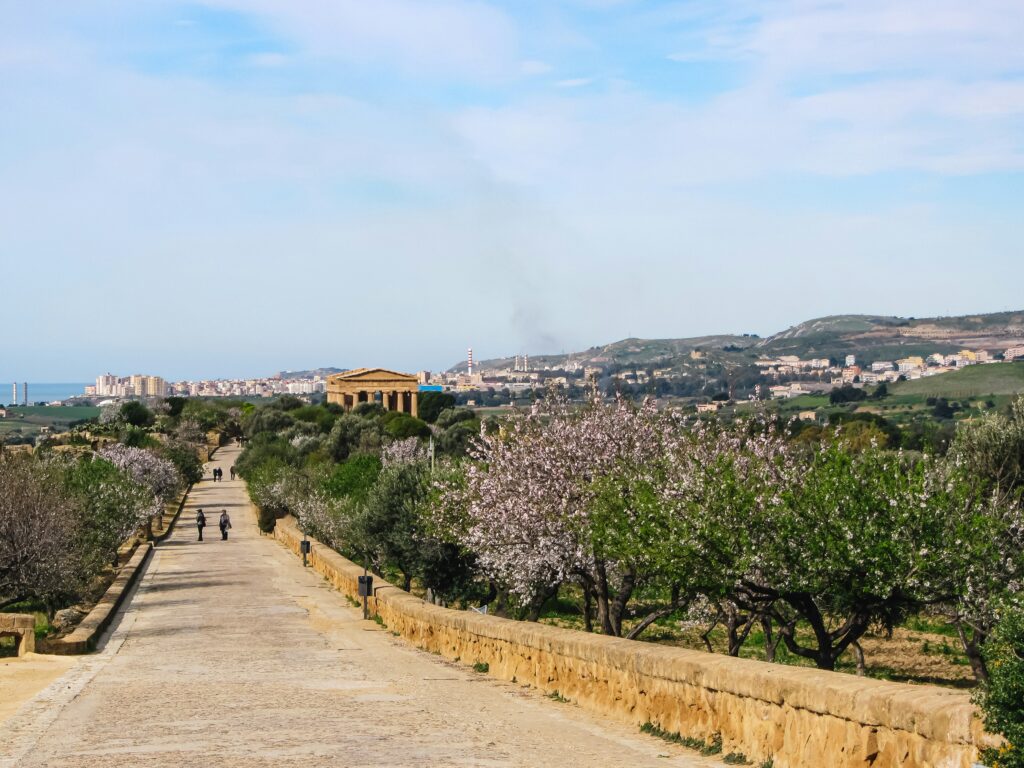
Sicily Road Trip: 5 Days Through the Heart of the Island
This five-day Sicily road trip starts in Palermo and winds its way southeast to Ortigia, the historic heart of Syracuse, covering roughly 450 kilometers in total. Designed with a relaxed pace, it’s ideal for history buffs, architecture lovers, street food fanatics, and curious wanderers who want to soak up Sicily’s rich layers without rushing. There’s enough depth to satisfy cultural cravings, but plenty of breathing room to let the island’s rhythm guide you.
And check out our article on the most important things to eat in Sicily while you’re there.
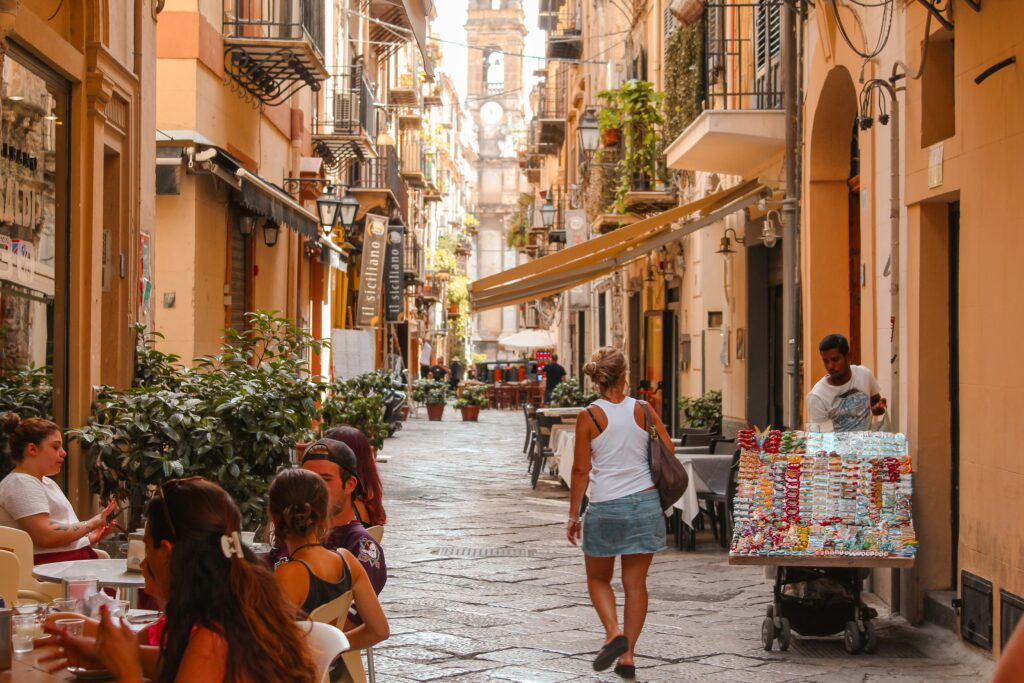
Day 1: Palermo – Markets, Mafia, and Mosaic History
Drive time: 0 km (Explore on foot)
Why Visit:
Palermo is chaos and charm in equal parts. Settled by Phoenicians, colonized by Romans, then reshaped by Arabs and Normans, the city’s architecture is a timeline. You’ll see Byzantine mosaics inside Norman churches, Baroque fountains beside Arab domes, and Mafia memorials next to anarchist street art. This is a city of contrasts, resilience, and relentless flavor.
Explore the 12th-century Palatine Chapel in the Palazzo dei Normanni, where golden mosaics shimmer in candlelight. Walk the Ballarò Market, where you’ll hear Arabic-infused dialects and smell deep-fried panelle wafting through ancient alleys.
And listen to Cerca’s Passport podcast episode on Sicilian’s fighting back against the mafia with, what else, food.
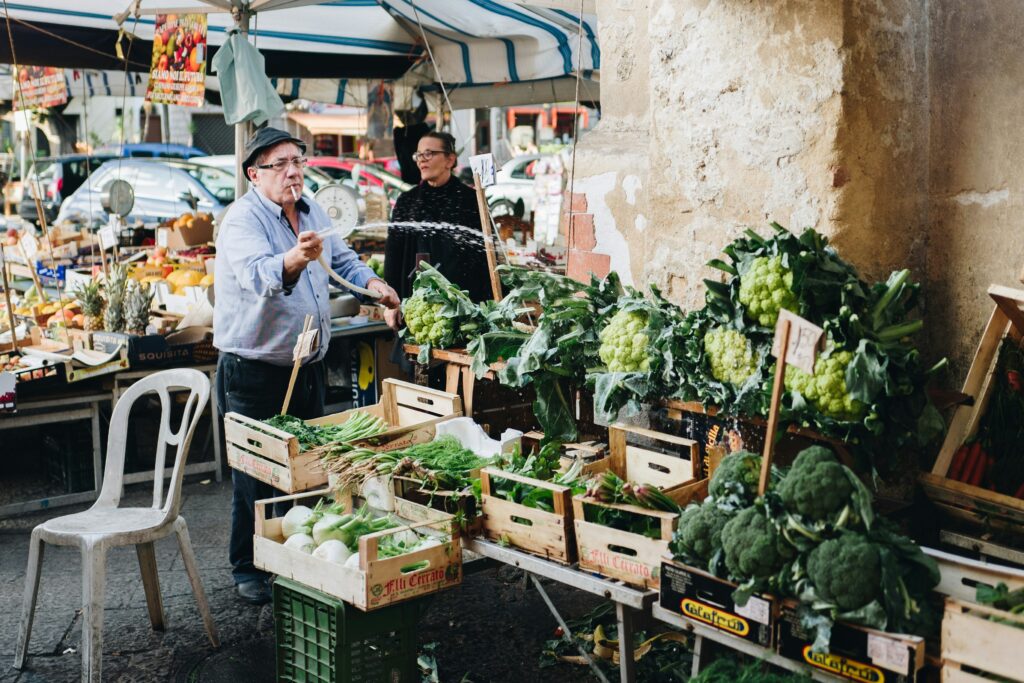
Eat:
Trattoria Al Ferro di Cavallo
A no-fuss, deeply local trattoria where nonnas eat lunch. Order the pasta con le sarde and thank us later.
Shop:
Sicilian Ceramics at Tre Erre. Traditional artwork, handmade and inspired by the myth and folklore of Sicily.
Also: Patrizia Italiano is a globally acclaimed Sicilian ceramist whose imaginative sculptures blend nature, folklore, and daily life, all inspired by the landscapes and culture of Sicily and the Aeolian Islands. You can purchase her work to be shipped to you at Studio Patrizia Italiano.
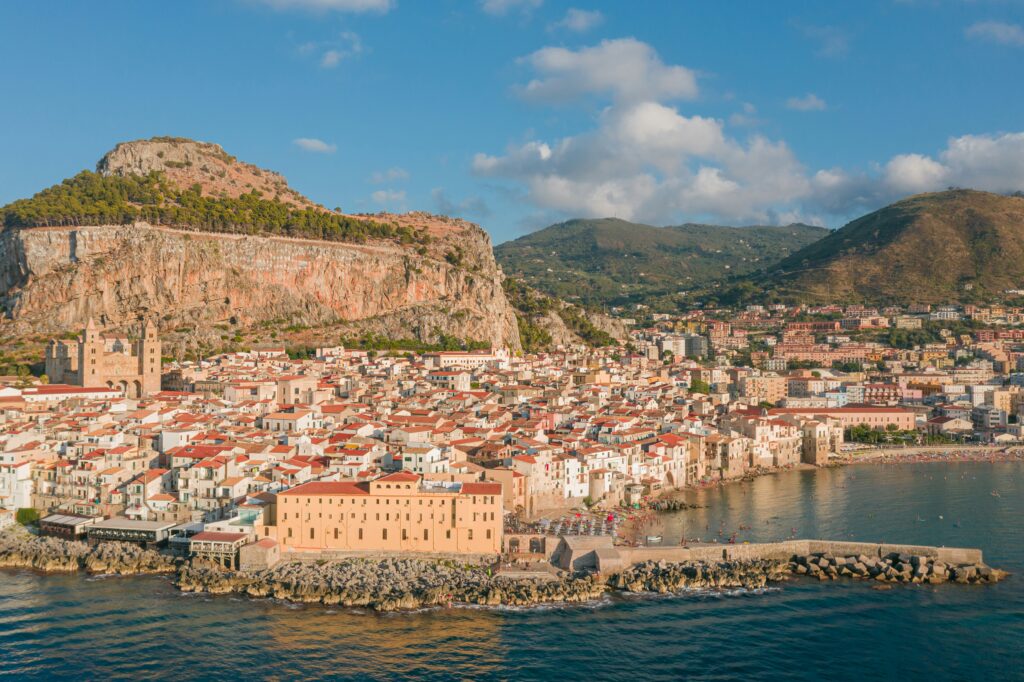
Day 2: Cefalù & Madonie Mountains – Medieval Dreams & Mountain Villages
Drive time: 1h 15m (72 km to Cefalù), add ~45 mins to Madonie towns
Why Visit:
Cefalù, perched between the mountains and the sea, is one of Sicily’s most picturesque coastal towns—and its Arab-Norman cathedral is a must-see. Built in the 12th century by Norman King Roger II, the cathedral is now a UNESCO World Heritage Site, famed for its glittering Christ Pantocrator mosaic, one of the finest examples of Byzantine artistry in Italy. The town itself is a harmonious blend of cultures, with winding medieval streets, palm-lined piazzas, and pastel buildings that tumble down toward the Tyrrhenian Sea. Walk its seafront promenade or climb La Rocca for sweeping views over red-tiled roofs and turquoise waters.
But the real magic unfolds inland, where the Madonie Mountains rise in soft folds of green. Take the slow drive into villages like Castelbuono, home to the 14th-century Castello dei Ventimiglia and artisanal panettone from the famed Fiasconaro bakery. Or venture to Petralia Soprana, where baroque churches and shepherd traditions still shape daily life. These mountain towns offer a window into Sicily’s pastoral soul—where wild fennel grows on the roadside, cheese is aged in caves, and family recipes are passed down like sacred texts. It’s an invitation to experience the island’s deep, slow heartbeat.
Hike around Piano Pomo or visit the 14th-century Castello dei Ventimiglia in Castelbuono.
Eat:
Palazzaccio Ristorante (Castelbuono)
Seasonal, mountain-foraged ingredients with a contemporary twist. Think wild mushroom risotto and slow-cooked lamb.
Shop:
Fiasconaro – Famed for reinventing the Sicilian panettone with local ingredients like manna (a tree sap), pistachios, and citrus. The boutique in Castelbuono is the original.
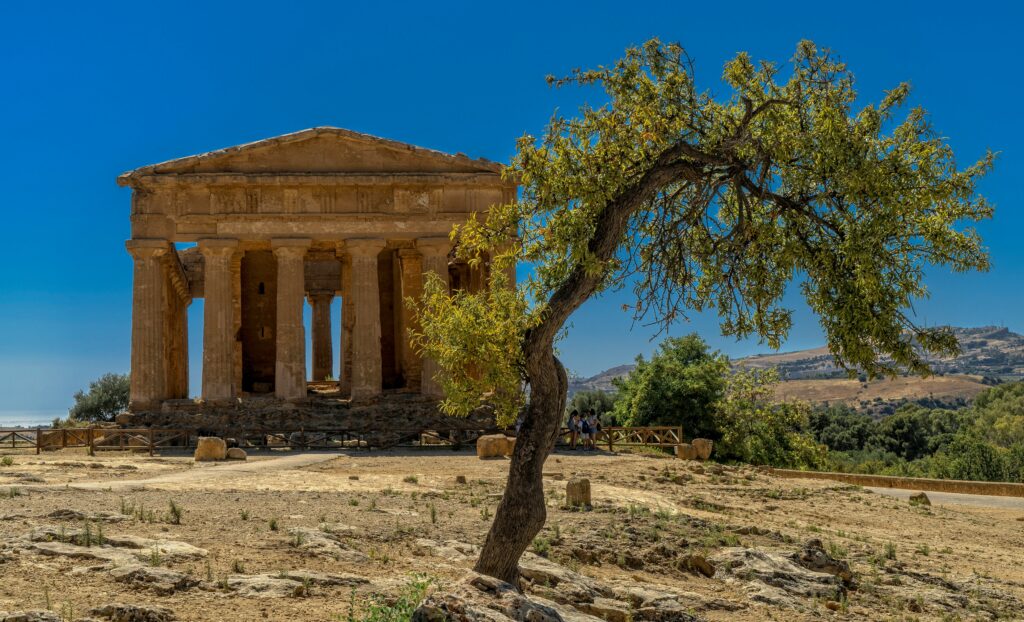
Day 3: Agrigento – The Valley of the Temples
Drive time: 2h 30m (160 km)
Why Visit:
The Valley of the Temples in Agrigento is one of the best-preserved Greek archaeological sites outside of Greece—it’s a soul-stirring testament to Sicily’s ancient identity as part of Magna Graecia. Founded as Akragas in 580 BCE by Greek colonists from Gela and Rhodes, the city was once one of the richest and most powerful in the Mediterranean. The philosopher Empedocles called it home, and Pindar described it as “the most beautiful city of mortals.” Today, the ruins stretch across a windswept ridge flanked by olive groves and almond trees, offering one of the most evocative views in all of Italy.
The Temple of Concordia, nearly flawless after more than two millennia, stands as a majestic icon of Doric architecture. Nearby, the remains of the temples dedicated to Hera, Heracles, and Zeus Olympios speak of a society where mythology, ritual, and civic pride were intimately entwined. Walking among these massive stone columns at sunset—when the temples take on a golden glow—you feel as if you’ve stepped into a living myth.
But Agrigento isn’t frozen in the past. The nearby archaeological museum presents ongoing discoveries that continue to reshape our understanding of the ancient world, and the city itself, though quieter than Palermo or Catania, is finding new life through slow tourism, art initiatives, and food culture that honors local ingredients and ancient techniques. A visit here isn’t just sightseeing—it’s time travel with a taste of something deeply Sicilian.
Be sure to visit the Kolymbethra Garden, an ancient citrus grove nestled beneath the temples. It’s a living archive of agricultural practices from ancient times.
Eat:
Trattoria Concordia
A rustic kitchen near the archaeological park, beloved for its grilled meats and almond-stuffed pastries.
Shop:
Cammarata Ceramiche – This small, family-run studio makes hand-thrown ceramic amphorae and olive oil jugs inspired by the ancient Greek motifs of Agrigento.
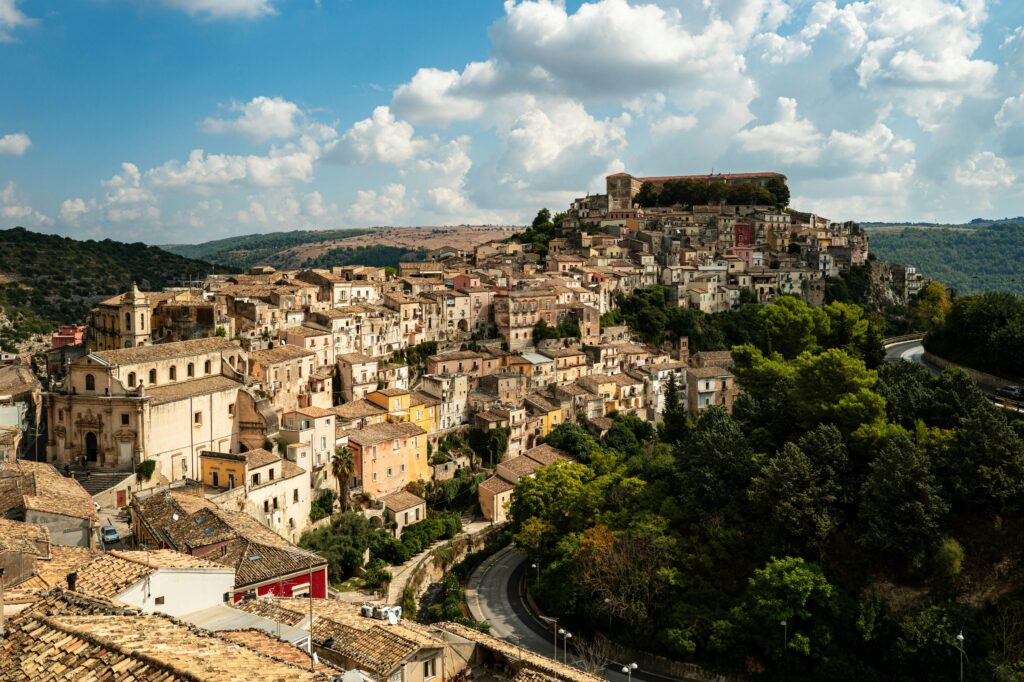
Day 4: Modica & Ragusa – Chocolate & Baroque Splendor
Drive time: 2h 40m (185 km)
Why Visit:
Modica and Ragusa are two of Sicily’s most stunning Baroque towns, both reborn from the rubble of a catastrophic earthquake in 1693 that leveled much of southeastern Sicily. Rather than rebuild in their original medieval forms, these cities embraced the ornate theatricality of the Baroque era, resulting in golden-hued streets, sweeping staircases, and churches that rise like sculptures from the hillsides. Today, both towns are UNESCO World Heritage Sites and visual feasts for anyone drawn to architectural drama.
Modica, nestled in a deep gorge, is also famed for its unique chocolate. Introduced by the Spanish during their rule, Modica’s chocolate is made using a centuries-old Aztec technique—cold-processed to retain its grainy texture and rich, aromatic flavor. It’s more rustic than refined, and utterly unforgettable. Don’t miss a tasting at one of the historic dolcerie.
Just a short drive away, Ragusa’s oldest quarter, Ibla, feels like a Baroque labyrinth—staircases wind through limestone streets, balconies overflow with flowers, and piazzas open onto panoramic views of the countryside. The Cathedral of San Giorgio anchors it all, as much a spiritual center as an architectural marvel. Together, these towns offer a rare glimpse into post-earthquake reinvention through beauty and resilience.
Tour the Cathedral of San Giorgio, wander through Giardino Ibleo, and make time for a chocolate tasting, or guided tour at Antica Dolceria Bonajuto.
Eat:
Trattoria La Rusticana (Ragusa Ibla)
Run by locals, it serves classic Sicilian dishes with no fanfare—just love. Try the rabbit in agrodolce and pasta alla Norma.
Shop:
Don Peppinu Chocolate Lab – Boutique chocolatier in Modica that riffs on tradition with fig, orange blossom, and even chili pepper infusions.
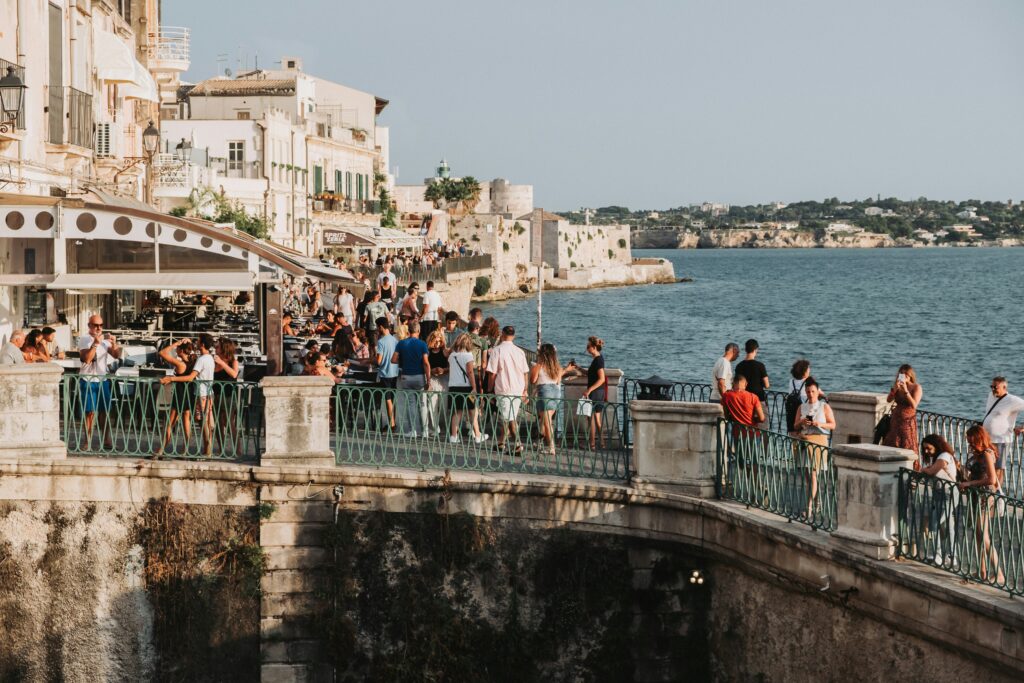
Day 5: Noto & Ortigia – Golden Stone & Island Mystique
Drive time: 1h 45m (97 km)
Why Visit:
Noto is a masterpiece of Sicilian Baroque, its honey-colored limestone glowing golden in the late afternoon sun. After the devastating earthquake of 1693, the town was entirely rebuilt on a new site, making it one of the most unified and elegant expressions of Baroque architecture in Europe. The wide boulevards, graceful staircases, and theatrical facades were designed to inspire awe—and they still do. The Cathedral of San Nicolò, with its majestic steps and twin bell towers, stands proudly at the heart of the city. Just around the corner, the Palazzo Nicolaci di Villadorata stuns with balconies held aloft by grotesque stone figures and noble grandeur.
From Noto, head east to Ortigia, the ancient heart of Syracuse. This small island has over 2,500 years of layered history. Once a powerful Greek colony, Ortigia has been shaped by Byzantine, Arab, Norman, and Spanish influences. Explore the Temple of Apollo, one of the oldest Doric temples in the West, and the Duomo di Siracusa, built atop an ancient temple to Athena and transformed across the centuries into a Baroque cathedral. End your day like a local—with a stroll along the lungomare, as the sun melts into the Ionian Sea in a blaze of orange and gold.
Eat:
Cortile Verga (Ortigia)
Tucked in a quiet courtyard, this place serves farm-fresh ingredients in seasonal dishes. The ricotta-stuffed zucchini flowers are dreamy.
Shop:
IUDICE Ceramics (Catania) – A contemporary Sicilian ceramic studio that modernizes ancient motifs with bright, sculptural flair.
Website
Final Notes:
- Car Rental Tip: Rent from a local company like Sicily by Car for drop-off flexibility.
- Packing Tip: Bring walking shoes, linen clothes, and an appetite.
- Travel Ethos: Respect the land, support local artisans, tipping at restaurants is not mandatory, but leaving a small token is generous.
Find more itineraries for road trips around the world at Cerca!